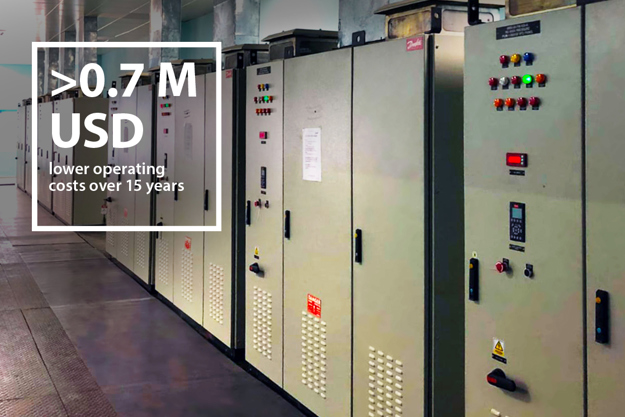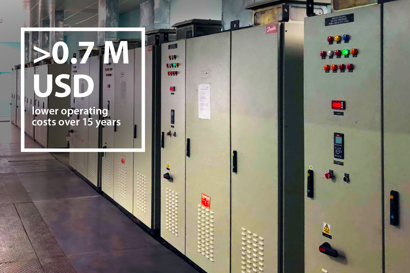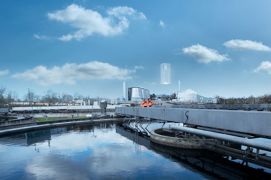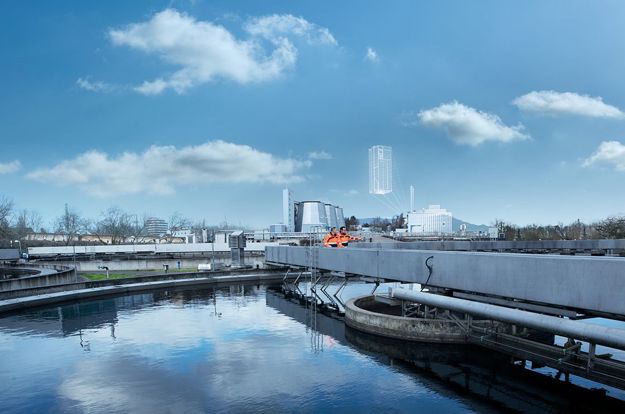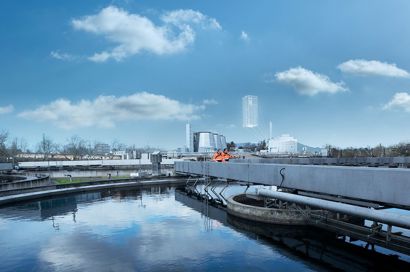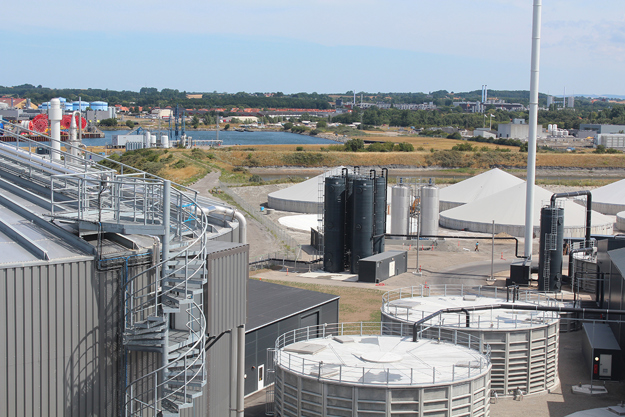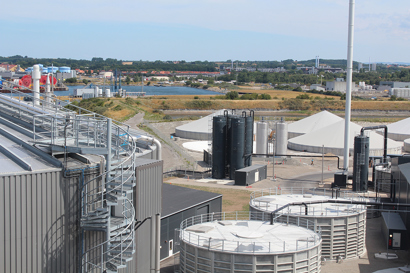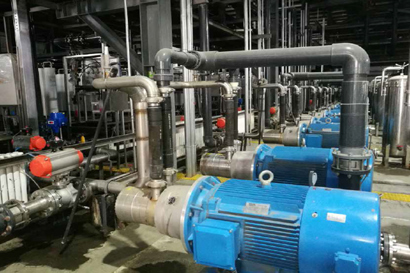Since 2010, Marselisborg wastewater treatment plant has transformed its focus beyond minimizing energy consumed, to maximizing net energy surplus. Nowadays the facility has net production of both electricity and heat, supplying the district heating system in Denmark’s second-largest municipality, Aarhus. The carbon footprint has been reduced by 35 % accordingly.
Water and wastewater treatment facilities are normally the single largest electricity consumer for a municipality. Typically water and wastewater treatment processes account for 25 – 40 % of the municipal electricity consumption. The high consumption is related to the energy intensive processes but also its continuous operation cycle, 24/7 and 365 days annually.
Over the years focus has been on developing new processes and control strategies to reduce energy consumed per liter of water processed. However, at the same time the increasing demands upon wastewater treatment quality, for example in nutrient removal, in turn increase net energy consumption.
Energy balance optimization
Water and wastewater treatment processes are characterized by high load variation during the 24-hour cycle and seasonally throughout the year. The use of frequency converters has therefore steady increased in order to control blowers, pumps and other motorized equipment, to adapt to the changing demand.
Since 2010 Aarhus Water has worked intensively together with water environment consultants to improve the energy balance for Marselisborg wastewater treatment plant.

Learn about the latest features in our Aqua Drive
Our VLT® AQUA Drive is updated with the latest patented edge computing technology. Supporting high uptime for your facility and saving on operating costs, by supervising your motor and pumps. With the edge computing solution, data is collected several times per second, ensuring that any measurements outside the normal range trigger a warning, thus minimizing the risk of undetected abnormalities.
Key steps in the strategy
- Optimization of the nitrogen removal process using online sensor control. The frequency converter adapts the level of aeration precisely to the need. This control system reduces energy consumption and increases the amount of carbon left in the system.
- Blower technology upgrade to a high-speed turbo blower. The upgrade achieves further reduction of energy consumption in the aeration process.
- Aerobic sludge age control as a function of temperature and load on the plant. Here frequency converter control of the return sludge pumps is the key to achieving energy reduction and increased retained carbon in the system.
- Upgrade of combined heat and power (CHP) process for energy production, with 90 % energy efficiency.
These changes together with improvements including the effective co-production of electricity and heat based on methane gas extracted from the aerobic sludge digestion process have created the impressive results of:
- 130 % electricity production (30 % excess electricity)
- Excess heat production of about 2.5 GWh/year
VLT® in every corner
Frequency converters are installed on almost all rotating equipment at Marselisborg WWTP: blowers, pumps, mixers and dewatering pumps. The frequency converters allow the plant to adapt to load variations, with maximum flexibility. Over 100 motors are controlled by VLT® frequency converters at Marselisborg.
Energy generation vision
The vision for Aarhus City is to extend energy generation even further, to achieve surplus production of energy from its wastewater treatment plants so high, that it can also meet the energy requirement of the city’s potable water supply. This will transform the single largest electricity consumer for the authority into an energy-neutral party.
Get more information
Related case stories
-
if (isSmallPicture) {


 How a new water pumping station keeps supply flowing in Bern
How a new water pumping station keeps supply flowing in BernSWITZERLAND: The Wehrliau pumping station in Bern delivers up to 1.20 M liters of drinking water hourly. iC7 drives play a key role in ensuring reliable supply.
-
if (isSmallPicture) {


 Koyambedu: 22% reduction in energy consumption at wastewater treatment plant
Koyambedu: 22% reduction in energy consumption at wastewater treatment plantINDIA: By using VLT® AQUA Drive FC 202 from Danfoss, Koyambedu wastewater treatment plant has reduced its energy consumption significantly.
-
if (isSmallPicture) {


 Driving efficient life support systems at Lodz Zoo
Driving efficient life support systems at Lodz ZooPOLAND: The Lodz Zoo Orientarium uses high-efficiency VLT® AQUA Drive FC 202 to secure reliable water quality in life support systems for rare animal species.
-
if (isSmallPicture) {


 Marselisborg: A path to an energy neutral water sector
Marselisborg: A path to an energy neutral water sectorMarselisborg Wastewater Treatment Plant went from energy consumer to energy producer by using VLT® AQUA Drive FC 202 from Danfoss. Learn more about that here.
-
if (isSmallPicture) {


 Full-scale biogas plant in Kalundborg ensures the return of all nutrients back to nature
Full-scale biogas plant in Kalundborg ensures the return of all nutrients back to natureAC drives from Danfoss help convert biomass from insulin and enzyme production to energy.
-
if (isSmallPicture) {


 Chinese factory relies on efficient APP pumps for ZLD wastewater treatment
Chinese factory relies on efficient APP pumps for ZLD wastewater treatmentChina's zero liquid discharge legislation (ZLD) is driving increased use of RO technology to treat industrial wastewater. Danfoss APP pumps are increasingly in demand to make such ZLD projects as energy-efficient - and profitable - as possible.





